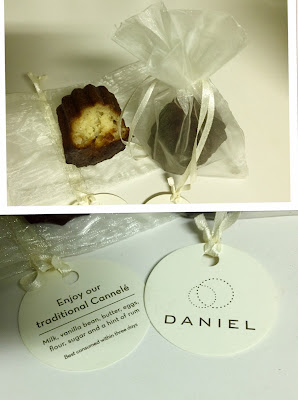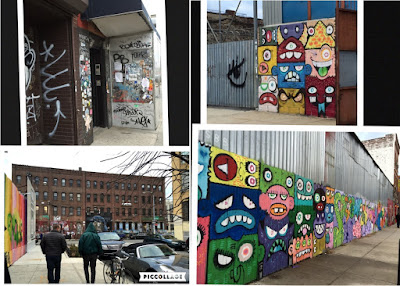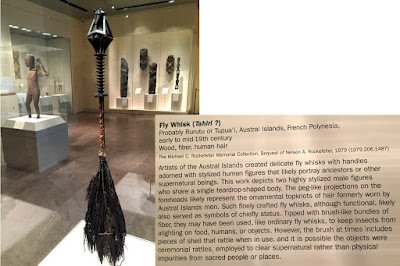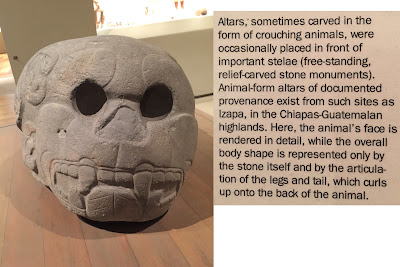This has been a great week. I have had the opportunity to review and to learn more about diabetes. Going back in history, after I graduated and received my license as a registered nurse, I worked at LDS Hospital on the Avenues. I worked on the medical floor and then for a year and a half I did diabetes teaching. If a person was admitted to the hospital and was diagnosed as a new diabetic or if a diabetic for any reason needed help, I was there to help.
I taught a class twice once a week. One day I talked about the effects of diabetes on the body and things to watch out for and how to care for feet and eyes and how to monitor blood sugars and some on diet although the dietician addressed most diet issues. The second day I talked about the types of insulin, how they worked, how to store it, and how to give self-injections. I also taught about oral medications for people who did not require insulin.
Sunday morning, one of the diabetic missionaries called me to tell me that his pump had quit working and what should he do. There was no such thing as insulin pumps way back when, so I did a quick study and had the missionary call the manufacturer of the pump to see if they could walk him through getting it to work. Unfortunately, the pump was a goner. I spent much of the day trying to find someone who could prescribe long acting insulin for the missionary to give his own injections until he could get a loaner pump on Tuesday.
Long story shortened, I learned some new things and re-learn a lot more. The missionary is doing well and hopefully, we will be able to find him a new pump somewhere. They cost a mere $10,000.00 give or take and he doesn't have family insurance. The missionary insurance doesn't cover such things. The doctor I found for him to see is trying to find one for him. Otherwise, he will have to go the rest of his mission giving his own injections. Pumps really are a blessing because it keeps the blood sugars more level without a lot of ups and downs. So much progress in this field since I was a kid!!
I helped with food preparation for a mission leadership training on Thursday and then in the afternoon I accompanied the diabetic missionary to the doctor so I could talk to her about the pump and the missionary's health.
Thursday evening I was blessed by the arrival of Jim and Christian (Rex and Tracy's oldest son). It was so good to see them. They went to Manhattan and saw Time's Square. Friday I went with them to the Statue of Liberty and to see some of the sights of the City. We had lunch at Katz's Delicatessen.
 |
| Wall Street |
 |
| Grand Central Station |
 |
| New World a Trade Center |
 |
Since its founding in 1888, it has become popular among locals and
tourists alike for its pastrami sandwiches
and hot dogs, both of which
are widely considered among New York's best. Each week,
Katz's serves
10,000 pounds of pastrami, 5,000 pounds of corned beef, 2,000 pounds of
salami and 12,000 hot dogs. |
 |
| Interior of Katz's Deli |
 |
| Pastrami sandwich |
 |
| Reuben sandwich with pastrami and corned beef on rye. |
That evening we had dinner at Daniel, an elegant restaurant in Manhattan. We had a four course dinner. It is a coat and tie dressy place. So in our Sunday best off we went. It was quite an experience to be waited on by so many people. It is choreographed like a dance. Two or more waiters bring the plates and everything is placed on the table at once. There is always someone to refill the water goblets and the crumbs are cleared along with the plates and silverware between each course.
I had lobster in gelee for the appetizer course. The second course was blackened sea bass with a vegetable that looked like onion but wasn't and then the third course was venison with an African grain. The dessert course was frozen ginger cream in chocolate on top of a cookie about the size of a quarter. They brought breads of all varieties for us to choose several times through the evening. They also brought little miniature chocolates to select from after the dessert and then they sent us home with a cannele. For some reason I am at a loss for words to adequately describe the evening!
 |
| Tiny appetizers at Daniel Restaurant |
 |
Little cake in a bag-a take away gift from Daniel.
|
Saturday morning we went to the Museum of Modern Art and then we went to Bushwick for pizza at a famous pizza restaurant.
 |
| Bagels for breakfast. |
 |
| Yummy mini cupcakes. |
 |
| Museum of Modern Art |
 |
| MOMA |
 |
| Looking down into the American Wing of the gallery. |
 |
| Stone facade/temple brought from Egypt. |
 |
| Body mask |
 |
| Display of statutes and carvings from Polynesia. |
 |
| Brick oven |
 |
From an article on line talking about Roberta's Pizzeria: "I personally
don’t remember
because I haven’t had the time to stand in the three-hour
line for pizza in about two years.
But hey, I hear it’s still pretty
good, and Roberta’s definitely deserves praise for their artistry in the
food business.
They grow their own produce, have published their own
cookbook and, hey, lotsa celebrities ate there from
the Clintons to Jay Z
and Beyonce! But then again there is that loong wait!" |
 |
| Pizza at Roberta's |
Ok, interlude for my weekly geography lesson: I want to tell you about Bushwick. Interesting place. It felt a bit like I had stepped back in time into the mid '60s. I can't really put a finger on why I felt that way but there was a lot of color and kind of a free spirit feel to the place. Many of the buildings are painted with murals. Much of it looks like graffiti but I believe that most of it is considered art. Anyway, I did my Grandma Google thing when I got home. It is a little long but might provide good reading when you can't sleep. From Google:
 |
| Street art in Bushwick |
"In 1638, the Dutch West India Company secured a deed from the local Lenape people for the Bushwick area, and Peter Stuyvesant chartered the area in 1661, naming it Boswijck, meaning "little town in the woods" or "heavy woods" in 17th-century Dutch. Its area included the modern-day communities of Bushwick, Williamsburg, and Greenpoint. Bushwick was the last of the original six Dutch towns of Brooklyn to be established within New Netherland.
The community was settled, though unchartered, on February 16, 1660, on a plot of land between the Bushwick and Newtown Creeks by fourteen French and Huguenot settlers, a Dutch translator named Peter Jan De Witt, and one of the original eleven slaves brought to New Netherland, Franciscus the Negro, who had worked his way to freedom. The group centered their settlement on a church located near today's Bushwick and Metropolitan Avenues. The major thoroughfare was Woodpoint Road, which allowed farmers to bring their goods to the town dock. This original settlement came to be known as Het Dorp by the Dutch, and, later, Bushwick Green by the British. The English would take over the six towns three years later and unite them under Kings County in 1683.
Many of Bushwick's Dutch records were lost after its annexation by Brooklyn in 1854. Contemporary reports differ on the reason: T. W. Field writes that "a nice functionary of the [Brooklyn] City Hall ... contemptuously thrust them into his waste-paper sacks", while Eugene Armbruster claims that the movable bookcase containing the records "was coveted by some municipal officer, who turned its contents upon the floor".
When Bushwick was founded, it was primarily an area for farming food and tobacco. As Brooklyn and New York City grew, factories that manufactured sugar, oil, and chemicals were built. The inventor Peter Cooper built a glue manufacturing plant, his first factory, in Bushwick. Immigrants from western Europe joined the original Dutch settlers. The Bushwick Chemical Works, at Metropolitan Avenue and Grand Street on the English Kills channel, was another early industry among the lime, plaster, and brick works, coal yards, and other factories that developed along English Kills, which was dredged and made an important commercial waterway. In October 1867, the American Institute awarded Bushwick Chemical Works the first premium for commercial acids of the greatest purity and strength. The Bushwick Glass Company, later known as Brookfield Glass Company, established itself in 1869, when a local brewer sold it to James Brookfield. It made a variety of bottles and jars.
In the 1840s and 1850s, a majority of the immigrants were German, which became the dominant population. Bushwick established a considerable brewery industry, including "Brewer's Row"-14 breweries operating in a 14-block area-by 1890. Thus, Bushwick was dubbed the "beer capital of the Northeast". The last Bushwick brewery closed its doors in 1976.
As late as 1883, Bushwick maintained open farming land east of Flushing Avenue. A synergy developed between the brewers and the farmers during this period, as the dairy farmers collected spent grain and hops for cow feed. The dairy farmers sold milk and other dairy products to consumers in Brooklyn. Both industries supported blacksmiths, wheelwrights, and feed stores along Flushing Avenue.
With the success of the brewing industry and the presence of the els, (elevated trains) another wave of European immigrants settled in the neighborhood. Also, parts of Bushwick became affluent. Brewery owners and doctors commissioned mansions along Bushwick and Irving Avenues at the turn of the 20th century. New York mayor John Francis Hylan kept a townhouse on Bushwick Avenue during this period. Bushwick homes were designed in the Italianate, Neo Greco, Romanesque Revival, and Queen Anne styles by well-known architects. Bushwick was a center of culture, with several Vaudeville-era playhouses, including the Amphion Theatre, the nation's first theatre with electric lighting. The wealth of the neighborhood peaked between World War I and World War II, even when events such as Prohibition and the Great Depression were taking place. After WWI, the German enclave was steadily replaced by a significant proportion of Italian Americans. By 1950, Bushwick was one of New York City's largest Italian American neighborhoods, although some German Americans remained.
The demographic transition of Bushwick after WWII was similar to that of many Brooklyn neighborhoods. The U.S. Census records show that the neighborhood's population was almost 90% white in 1960, but dropped to less than 40% white by 1970. As white families moved out of Bushwick, working-class African American and Puerto Rican and other Caribbean American families moved into homes in the southeastern edge of the neighborhood, that closest to Eastern Parkway. By the mid-1950s, migrants began settling into central Bushwick. A strong proclivity among these new residents to homeownership and block associations helped the neighborhood survive the economic and social distress of the 1970s.
On the night of July 13, 1977, a major blackout occurred in New York City. Arson, looting, and vandalism occurred in low-income neighborhoods across the city. Bushwick saw some of the most devastating damage and losses. While local owners in the predominantly Puerto Rican Knickerbocker Avenue and Graham Avenue shopping districts were able to defend their stores with force, suburban owners with stores on the Broadway shopping district saw their shops looted and burned. Twenty-seven stores, some of which were of mixed use, along Broadway were burned. Looters (and residents who bought from looters) saw the blackout as an opportunity to get what they otherwise could not afford. Fires spread to many residential buildings as well. After the riots were over and the fires were put out, residents saw some streets that looked like Brooklyn Heights, and others that looked like Dresden in 1945: Unsafe dwellings and empty lots among surviving buildings. The business vacancy rate on Broadway reached 43% in the wake of the riots.
Bushwick was left with a lack of both retail stores and housing. After the blackout, residents who could afford to leave abandoned the area. But new immigrants were coming into the area during the late 1960s, early 1970s, and 1980s, many of whom were from Puerto Rico, the Dominican Republic, and, more recently, Central America. However, apartment renovation and new construction did not keep pace with the demolition of unsafe buildings, forcing overcrowded conditions at first. As buildings came down, the vacant lots made parts of the neighborhood look and feel desolate, and more residents left. The neighborhood was a hotbed of poverty and crime through the 1980s. During this period, the Knickerbocker Avenue shopping district was nicknamed "The Well" for its seemingly unending supply of drugs. In the 1990s, it remained a poor and relatively dangerous area, with 77 murders, 80 rapes, and 2,242 robberies in 1990
Starting in the mid-2000s, the City and State of New York began pouring resources into Bushwick, primarily through a program called the Bushwick Initiative.
A flourishing artist community, which has existed in Bushwick for decades, now is a main demographic of Bushwick; dozens of art studios and galleries are scattered throughout the neighborhood."
Back to my week: I went back to my apartment to finish my weekly reports and the others went on to Rockefeller Plaza to ice skate and to see the city by night from the Top of the Rock.
I was sad to see them leave Sunday afternoon but it was a good few days with them.
I miss my family but I know that the Lord is blessing me. I have the opportunity to learn new things and to review things I learned before. I feel the Spirit guiding me to help these missionaries. I know that the Lord loves us all and will lead us to return to His presence if we will listen to that still small voice and be obedient to the commandments.
I love you my family and friends.
 |
| First snowfall-didn't stick to roads and walks but some black ice. |
 |
| Decorative cabbages in a flower box. |


















